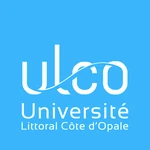One year post-doctoral position in Atmospheric/Physical Chemistry
Université du Littoral - Côte d'Opale
For nearly three decades, the Université du Littoral Côte d’Opale (ULCO) has on its four campuses – Boulogne-sur-Mer, Calais, Dunkirk and Saint-Omer – the ambition to offer the best possible education.
Our quality training courses are based on the expertise of research laboratories whose excellence is recognised by evaluation bodies. The multi-disciplinary nature of the courses on offer enables users to benefit from a rich and complementary range of training courses based on innovative educational projects.
Throughout their studies, we support students to help them build their professional project, enhance their career path and prepare their access to employment. Our excellent success and professional integration rates show that our efforts are bearing fruit and enable students to start their professional life with confidence.
When they arrive at ULCO, students join more than a place of knowledge and learning. They become part of what we call the university “family”. A big family, since there are nearly 10,000 of them studying here. A dynamic place and above all a place with a human dimension.
In addition to its mission of training, research and community services, the university offers many opportunities for engagement – thanks to a dynamic range of associations – helping to make students enlightened citizens and actors in the world of tomorrow.
Our motto at ULCO is : The University with a human dimension !
Homepage: https://www.univ-littoral.fr/en/
As part of the French National Research Agency (ANR) project “FAAR” (Fe Aerosols Atmospheric Reactivity), the “University of the Opal Coast” is looking for a post-doctoral researcher to contribute to a Project in Physical Chemistry, in Dunkirk, North of France.
Description
Iron (Fe) is an essential micronutrient for the development of oceanic biomass, which is one of the main carbon sinks on the global scale. In about 30% of the oceans, the development of this biomass is constrained by an iron deficiency that limits primary production. This deficiency is related to the very low concentrations of soluble Fe (bioaccessible in first approximation) in the surface waters. In order to understand the origin and consequences of these low Fe levels (in the order of ng Fe/L), various models have sought to determine the variability of Fe inputs to the ocean, particularly via aerosols. In the last decade, progress in the measurement of Fe isotopic composition has made it possible to test the sensitivity of these models to spatiotemporal variations in inputs, especially in the case of anthropogenic aerosols, which are known to be highly soluble in cloud water. However, this approach is made difficult by the existence of isotopic fractionation phenomena that would be linked to the dissolution of particles within atmospheric clouds. Our previous works seem to show that this isotopic effect is linked to the existence of a competition between Fe-ligand complexes in solution and the presence of some similar complexes on the surface of particles [1, 2].
The FAAR project aims to explain these processes through a double approach, both experimental and theoretical. The recruited person will simulate in the lab the dissolution of model Fe aerosol particles in solutions mimicking cloud water, to link the isotopic composition of the soluble Fe to the characteristics of the surface complexes. These model particles are hematite (alpha-Fe2O3) nanoparticles, whose crystal growth has been controlled, in order to produce nanoparticles with preferential facets exposed to cloud water. Second, the recruited person will estimate theoretically the fractionation via quantum chemical methods. These estimations will be compared to experimental results and to the respective stabilities of the surface and solution complexes, in order to conclude on the possibility of extending our simulations to more realistic atmospheric conditions.
[1]: In-cloud processing as a possible source of isotopically light iron from anthropogenic aerosols: new insights from a laboratory study.
Daniel Santos Mulholland, Pascal Flament, Jeroen de Jong, Nadine Mattielli, Karine Deboudt, Guillaume Dhont, Eugène Bychkov.
Atmospheric Environment, 2021, 259, 118505 (doi : 10.1016/j.atmosenv.2021.118505)
[2]: Laboratory study of iron isotope fractionation during dissolution of mineral dust and industrial ash in simulated cloud water.
Elena C. Maters, Daniel S. Mulholland, Pascal Flament, Jeroen de Jong, Nadine Mattielli, Karine Deboudt, Guillaume Dhont and Eugene Bychkov.
Chemosphere, 2022, 299, 134472 (doi: 10.1016/j.chemosphere.2022.134472).
Candidate Profile
The ideal applicant would have:
. a PhD in Atmospheric, Physical, Analytical or Quantum Chemistry
. Experience with isotopes studies and traces analyses
. Experience with quantum chemical calculations (Gaussian)
. Knowledge of security rules in the lab
. Interest on presenting results at conferences and lead the writing of papers for peer-reviewed journals
. Ability to communicate and work with multiple students and scientists
To apply, send by e-mail, to Carmen Ciotonea (carmen.ciotonea@univ-littoral.fr), Guillaume Dhont (guillaume.dhont@univ-littoral.fr) and Pascal Flament (pascal.flament@univ-littoral.fr), Université du Littoral – Côte d’Opale, Dunkerque, France:
- A Curriculum Vitae, including a publication list
- A motivation letter
- A selection of maximum 3 publications in PDF
- Two recommendation letters

